In the latest episode of our podcast, Road to ZERO, we discuss a new consumer tool easing the transition to renewables. EnergyFlex, a free app, offers insights and guidance on energy use. It empowers Australians to make small, impactful changes that reduce energy bills, usage, and environmental impact.
Roshan caught up with Craig Phasey, Co-Founder and Head of Solutions for EnergyFlex, to explore how the app can transform Australia’s energy landscape.
What is EnergyFlex?
EnergyFlex is an innovative, Australian-made app designed to simplify and transform the way Australians approach energy usage. This pioneering platform offers an EnergyFlex Rating that allows users to see how effectively they utilise renewable energy, paired with insights to optimise their energy habits for maximum savings and environmental impact. By giving users the tools to align their energy use with renewables, EnergyFlex supports Australia’s clean energy transition and provides rewards for eco-friendly actions. Backed by a veteran-owned team, EnergyFlex is dedicated to empowering Australians to make energy choices that benefit both their wallets and the planet.
The EnergyFlex app in action
To get a real sense of its impact, I tested the EnergyFlex app. Recently, my family moved into a new home without solar, so I was curious about our current energy impact. Here’s how I signed up:
- Downloaded the EnergyFlex app from Google Play (also on the Apple App Store).
- Signed up with my email, then verified it (check your junk folder if needed).
- Selected my energy retailer and agreed to provide a year of data access.
- Completed verification and, within minutes, had access to my data.
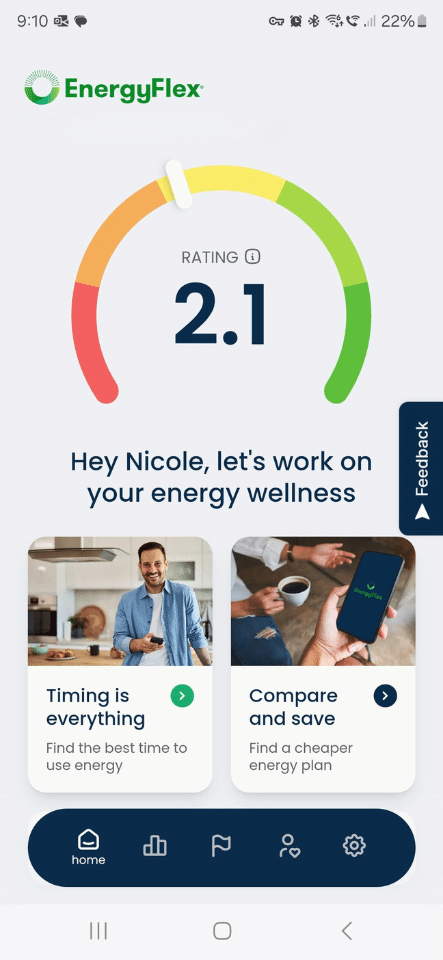
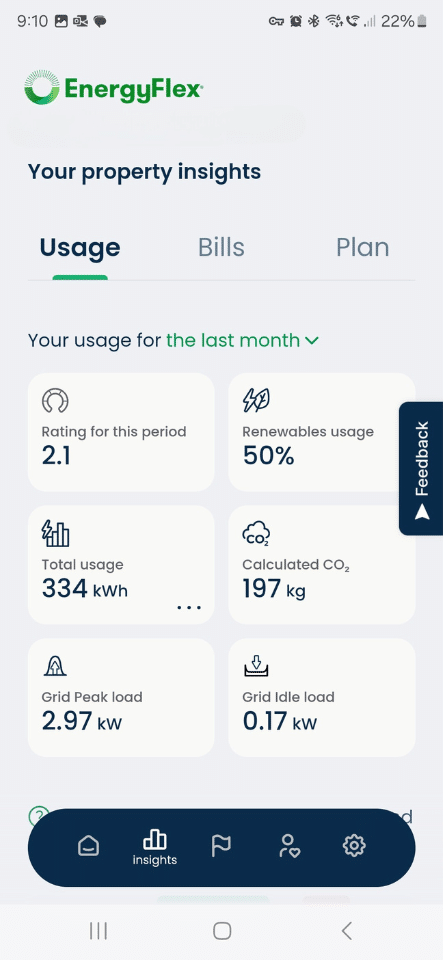
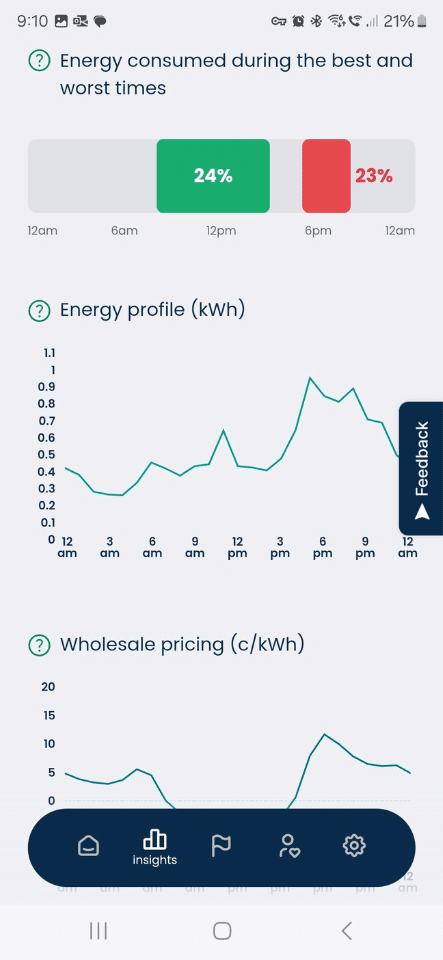
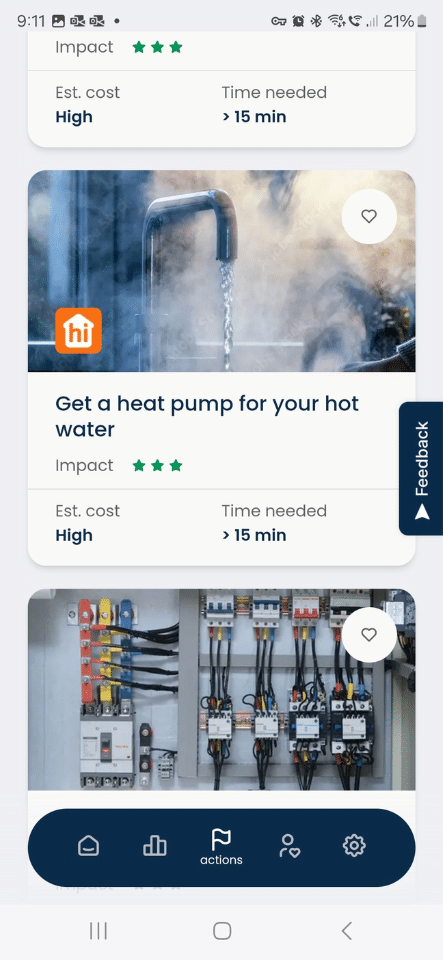
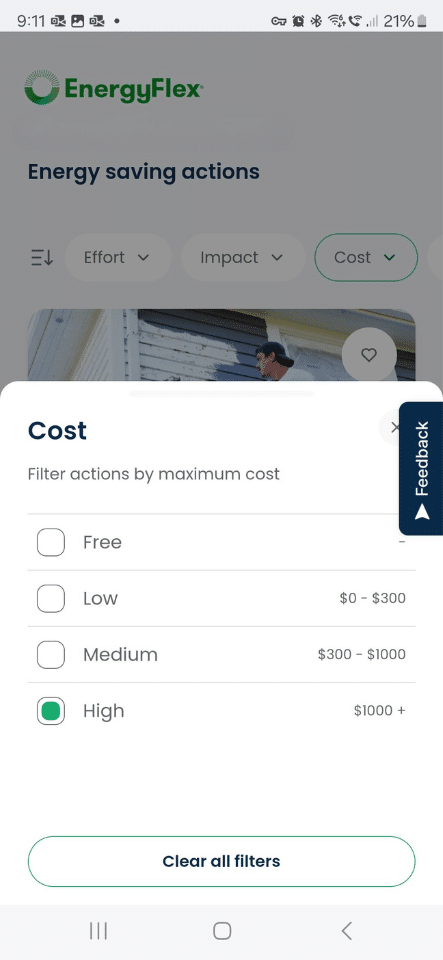
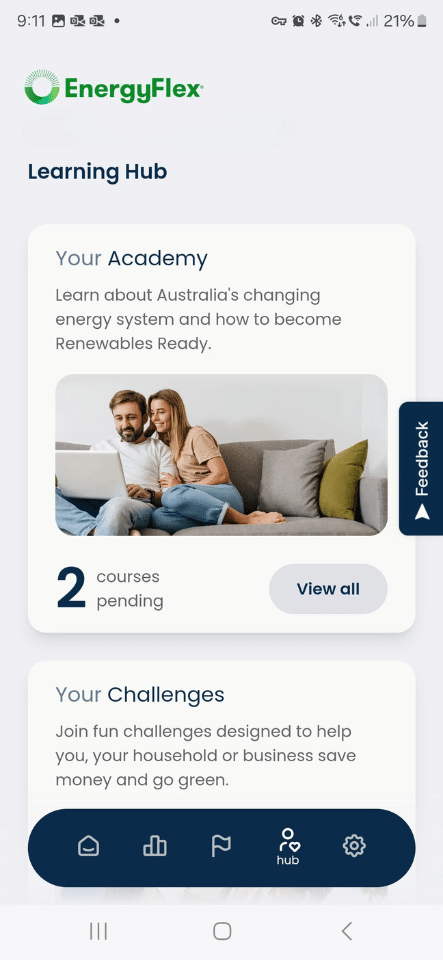
The EnergyFlex Rating and data available were impressive. My rating of 2.1 was a reminder of how much our energy costs and environmental impact had increased without solar. One insight showed our “worst time” energy usage, mainly from old habits like running the dishwasher at night, which I’ll address.
Energy saving actions and Learning Hub
For its Energy saving actions and Learning Hub, the EnergyFlex app is absolutely worth downloading. The Energy saving actions tab includes ways to reduce energy use, from low-cost actions to larger purchases, and a filter to help you choose impactful changes. Simple advice, like boiling only the amount of water you need, can reduce waste.
The Learning Hub offers quick courses on renewable energy, perfect for individuals, families, and businesses eager to learn about Australia’s renewable landscape and how to support it.
The goals of EnergyFlex: Energy wellness and Australia’s energy transition
Roshan sat down to chat with Craig Phasey. The following is a brief summary and some insight into the goals of EnergyFlex.
What inspired you to create EnergyFlex, and how does it contribute to achieving a zero-carbon future?
EnergyFlex began with a request from Shell QGC to reduce energy costs, revealing that people treat electricity as a constant, unlike other resources. Recognising flexibility as crucial for a renewable-powered future, EnergyFlex shifted its focus to educating residential consumers about timing energy use, aiming for a long-term ripple effect that benefits all sectors in the zero-carbon transition.
EnergyFlex emphasises the concept of “energy wellness” and “becoming Renewables Ready”. Can you explain what that means and why it’s important?
EnergyFlex views energy as fundamental to our lives and communities, emphasising “energy wellness” to understand and adapt to changes brought by renewables. “Becoming Renewables Ready” means proactively adjusting our energy habits to keep pace with the transition, empowering us to thrive in a sustainable future.
I’ve seen references to the importance of timing energy use as a concept and why it’s crucial in the transition to renewables… can you elaborate on this?
Timing energy use is key as renewables are inherently variable; shifting energy consumption to periods of renewable generation (like daytime solar) reduces fossil fuel dependence and costs. For example, energy prices can drop to nearly zero during the day but spike at night, so using energy when renewables are abundant supports an affordable, renewable-powered system.
How does EnergyFlex empower individuals and businesses to make a difference in the energy transition?
EnergyFlex empowers users by visualising their consumption, educating them on the energy system, and offering actionable steps to support renewables. The platform connects users to services, like solar installers or electricians, helping them save money while making informed choices to improve their energy wellness.
What are some of the biggest challenges you see in achieving a zero-carbon emissions future, and how can we overcome them?
A major challenge is people feeling disconnected from the transition. EnergyFlex addresses this by educating users about their role in the energy system and empowering them with tools to act. A zero-carbon future is achievable and promises a more efficient, human-centred energy system, with EnergyFlex driving collective action toward sustainability.
How does EnergyFlex address the “nurture” aspect of energy efficiency, encouraging behaviour change alongside technological solutions?
Traditional efficiency focuses on reducing energy use, but with renewables, timing is key. Since storage is costly, EnergyFlex emphasises “nurturing” user behaviour to consume energy when renewables are abundant. A 3-star appliance used during peak solar hours is often greener than a high-efficiency appliance used off-peak, making timing just as vital as efficiency.
The EnergyFlex Rating system is a unique feature of your app. Can you explain how it works and how it motivates users to make energy-smart choices?
The EnergyFlex Rating, a score out of 5, reflects how efficiently users consume energy based on various factors, like usage timing and market conditions. While simple to interpret, the score drives behaviour change by motivating users to improve their rating through actions that lower emissions and energy costs, encouraging comparisons across homes, businesses, and other users.
How does EnergyFlex leverage technology and data to personalise the user experience and drive behaviour change?
EnergyFlex uses data from smart meters, weather, and solar PV to analyse user consumption and provide personalised recommendations for cost-effective, renewable-focused usage. By focusing on individual habits, the app empowers users to control their energy impact with high-resolution insights that make meaningful adjustments easy and achievable.
How does EnergyFlex address the needs of different user groups, such as homeowners, renters, and businesses?
With a universal rating system, EnergyFlex allows all users—homeowners, renters, and businesses—to understand and compare their energy efficiency. For renters, the app helps optimise usage within rental limitations and encourages advocacy for upgrades. It also promotes “virtual solar,” enabling all users to benefit from abundant solar energy in the grid, supporting gradual optimisation towards solar if feasible.
Can you share any inspiring success stories from EnergyFlex users who have made significant changes in their energy habits?
One client in Melbourne reduced their bill from $1200 to under $450 with plan adjustments alone, highlighting how EnergyFlex can save users substantial amounts and empower them financially. These stories illustrate real change in users’ lives, with EnergyFlex providing resources to achieve and share their success stories.
What are your hopes for the future of energy in Australia, and how can we collectively achieve a sustainable and prosperous energy system?
Australia has immense potential as a renewable energy leader. By focusing on value-added, renewable-powered industries and resources, it can drive both domestic prosperity and sustainability. EnergyFlex envisions a flexible, renewable-based system that positions Australia as a global energy powerhouse.
What are your views on the current state of energy pricing in Australia, and what changes would you like to see to make it more transparent and affordable for consumers?
Australia’s pricing model, designed for fossil fuels, doesn’t suit renewables. Dynamic pricing, which reflects fluctuating supply costs, encourages consumers to shift energy use to off-peak times, saving them money and supporting the grid. Transparent pricing empowers informed decisions, essential for an affordable, sustainable future.


















